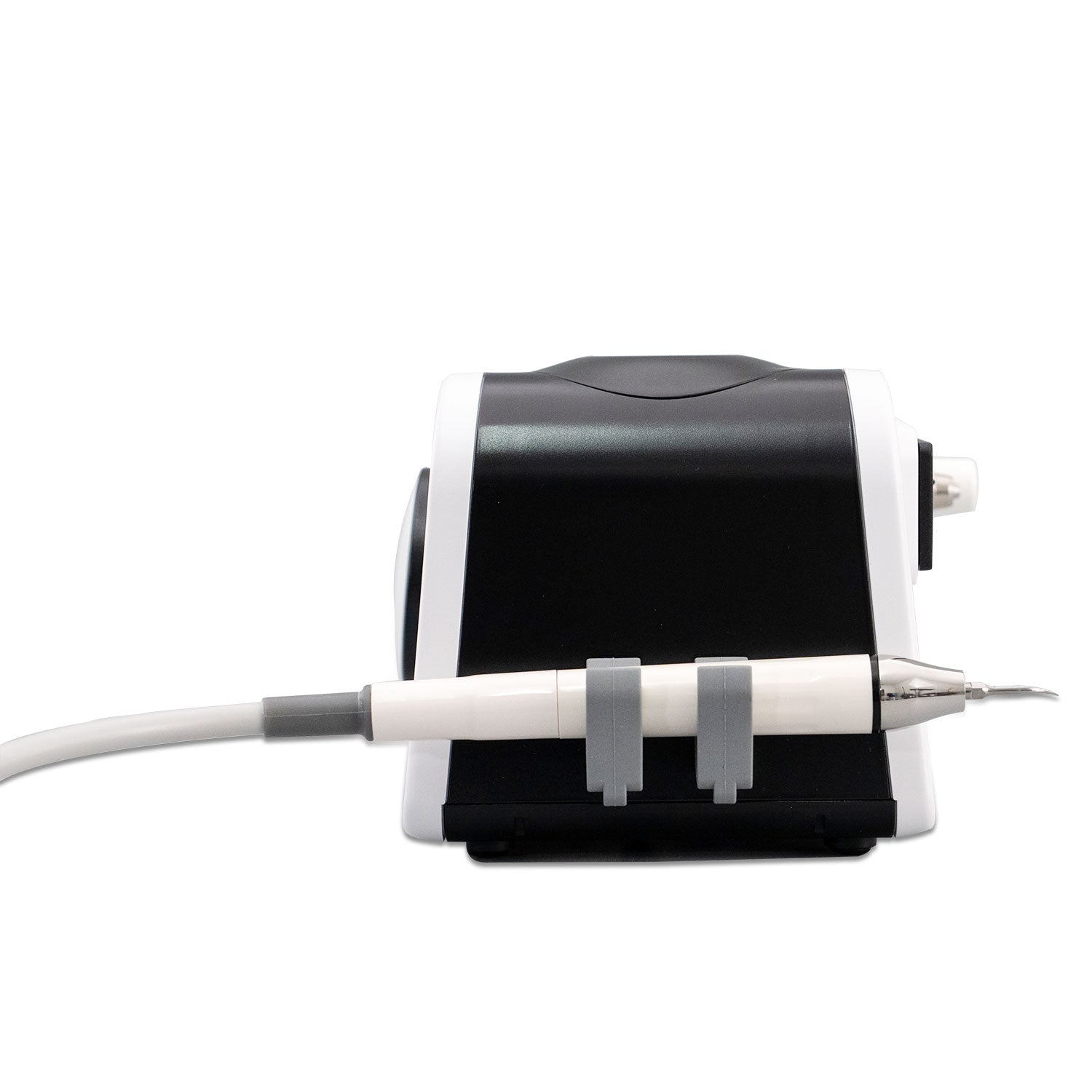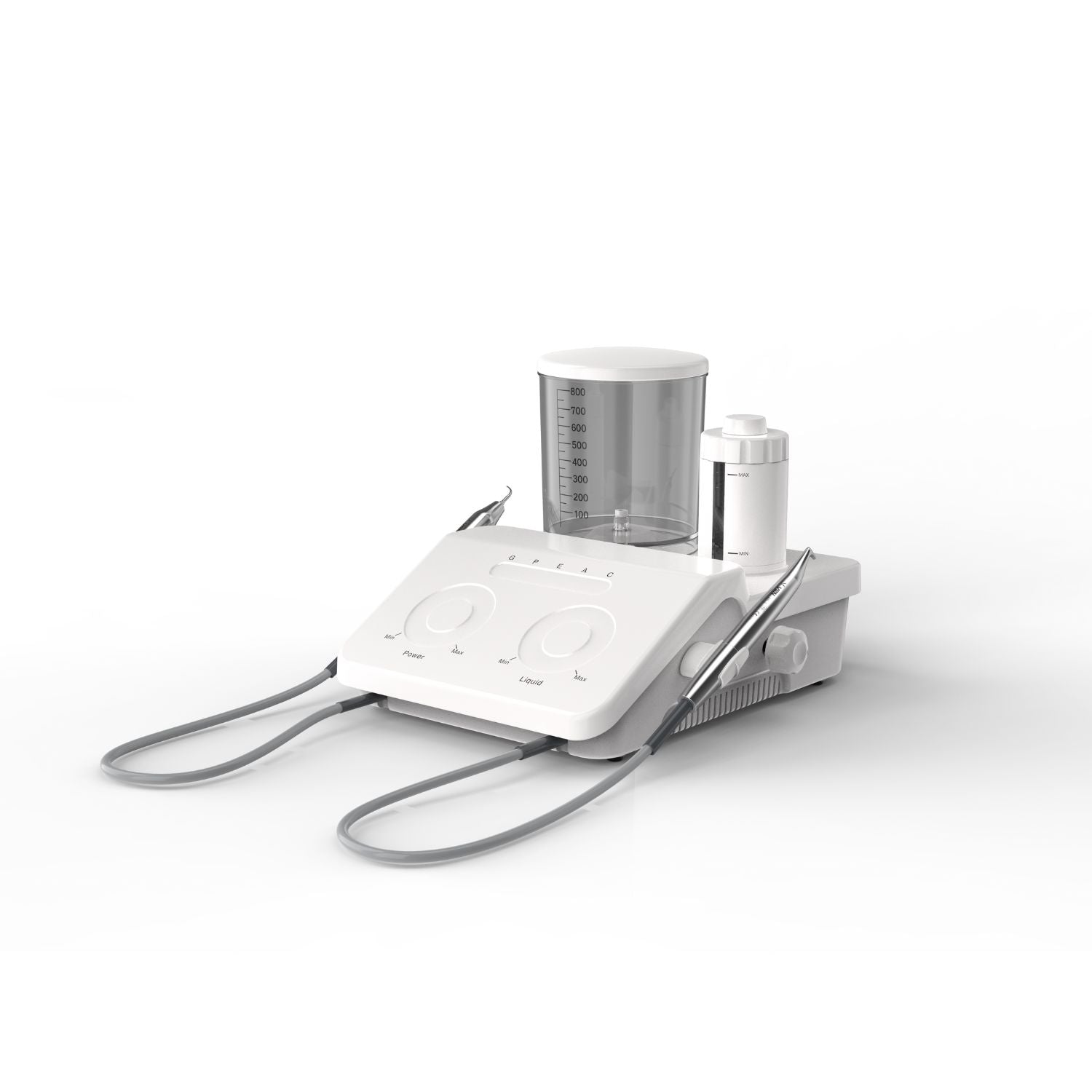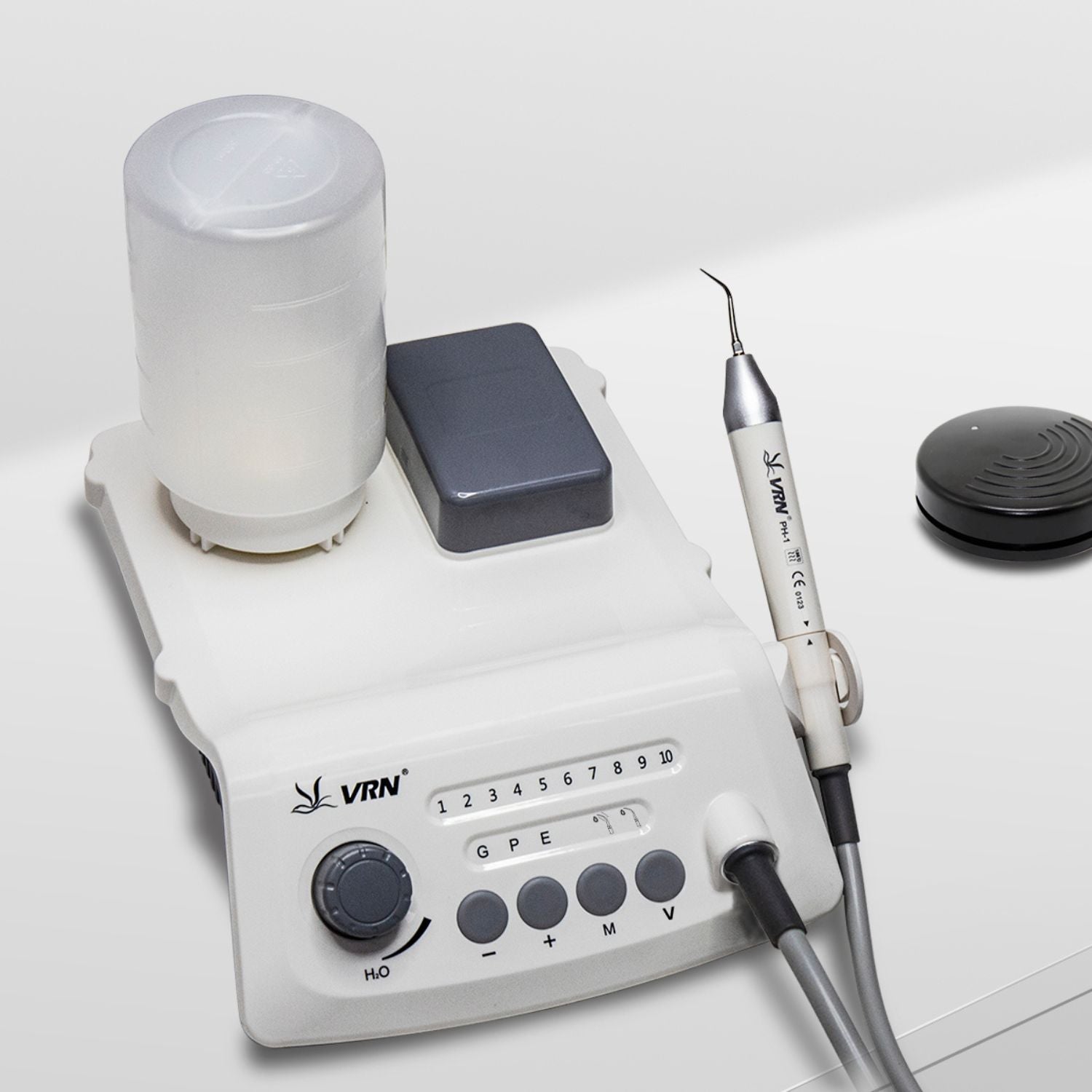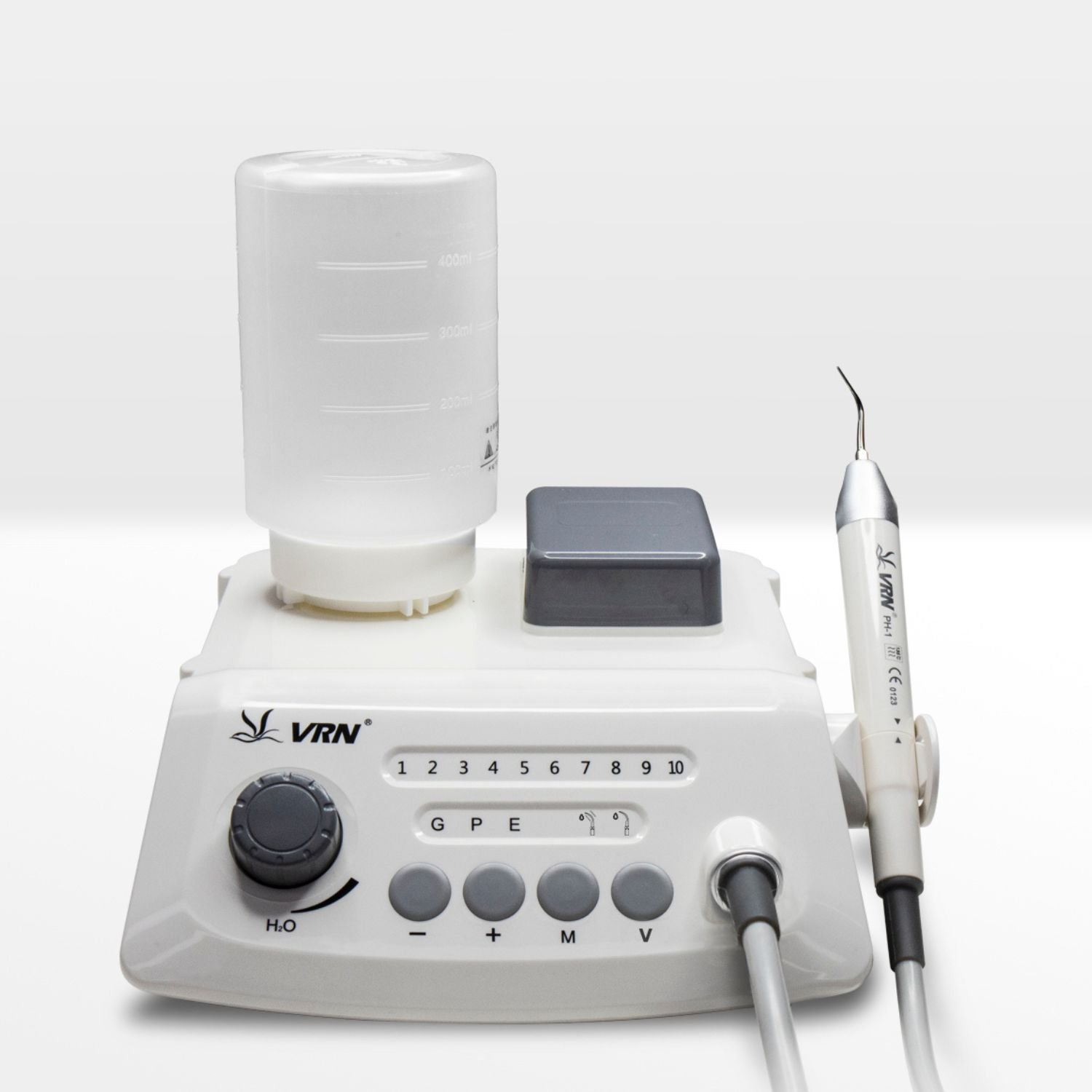
Istar Ultrasonic Scaler
Istar offers high-quality ultrasonic scalers designed for precision and durability, ensuring effective dental cleaning and patient comfort.
Key Features
Reliable Performance
Istar’s ultrasonic scaler provides consistent and efficient scaling, meeting the needs of professional dental care with precision and effectiveness.
Durable Tip Material
Made from high-quality materials to withstand regular use and ensure long-term durability.
Easy to Sterilize
Designed for simple cleaning and disinfection, maintaining rigorous hygiene standards.
Competitive Price
Istar’s dental scaler offers excellent value without compromising on quality, making it an economical choice for dental practices.

Dental Ultrasonic Scaler Working Principle
Dental ultrasonic scaler have different ultrasonic generation methods, usually divided into piezoelectric ultrasonic scaler and magnetostrictive ultrasonic scaler.
In modern dental practice, piezoelectric ceramic tooth cleaning machines are more popular, and their advantages are low price, wide use, and high tooth cleaning efficiency.
Types of Ultrasonic Scaler
Air scalers use compressed air and operate at a lower frequency (2,500-6,000 Hz), while power scalers use electricity and operate at a higher frequency (25,000-50,000 Hz).

FAQ of Ultrasonic Scaler
Using a dental scaler requires precision and care to avoid damaging teeth and gums. Here's a step-by-step guide:
Preparation: Before using the scaler, ensure your hands are clean and the tool is sterilized. Work in a well-lit environment and have a small mirror handy to inspect hard-to-see areas.
Hold the Scaler Correctly: Grip the dental scaler like a pencil, with your thumb, index, and middle fingers to maintain control and precision.
Start with the Front Teeth: Begin scaling by gently placing the tip of the scaler at the gum line of your front teeth. Use short, controlled strokes to scrape away plaque and tartar.
Work in Sections: Divide your mouth into quadrants (upper left, upper right, lower left, lower right) and work on one section at a time. Move the scaler along the gum line and between teeth to remove buildup.
Rinse and Clean: After scaling each section, rinse your mouth with water or mouthwash to remove loosened debris. Ensure the scaler is thoroughly cleaned after use.
It’s important to be gentle to avoid damaging enamel or gums, and for more serious tartar buildup, professional care is recommended.
Air scalers and power (ultrasonic) scalers differ in their mechanisms and efficiency.
Air scalers use compressed air with lower power, making them more suitable for lighter cleaning tasks, but they tend to generate more noise and discomfort.
In contrast, power scalers use electrical energy, operate at higher frequencies, clean faster and deeper with less noise, and use water cooling, providing greater comfort for patients. They are the ideal choice for removing stubborn plaque and calculus.
Cleaning the ultrasonic scaler tip is essential for maintaining its performance and ensuring patient safety. Here's how to properly clean it:
Disconnect the Tip: After use, turn off the device and carefully detach the ultrasonic scaler tip from the handpiece.
Rinse with Water: Immediately rinse the tip under running water to remove any debris, such as plaque or calculus, from its surface.
Brush Gently: Use a soft-bristled brush or a scaler cleaning brush to gently scrub the tip, ensuring all remaining debris is removed from grooves or crevices.
Disinfect: Submerge the tip in an approved disinfectant solution or ultrasonic cleaning bath, following the manufacturer's guidelines. This helps eliminate bacteria and potential contaminants.
Sterilize: Place the cleaned tip into an autoclave for sterilization. Ensure the tip is completely dry before sterilization to prevent corrosion.
Store Properly: After sterilization, store the tip in a clean, dry environment, preferably in a sterile pouch, until its next use.
Regular cleaning and proper sterilization prevent the build-up of debris, maintaining the scaler's effectiveness and patient safety.
Any question?
If we still haven't answered your question, you can contact us below and we will get back to you as soon as possible.



























